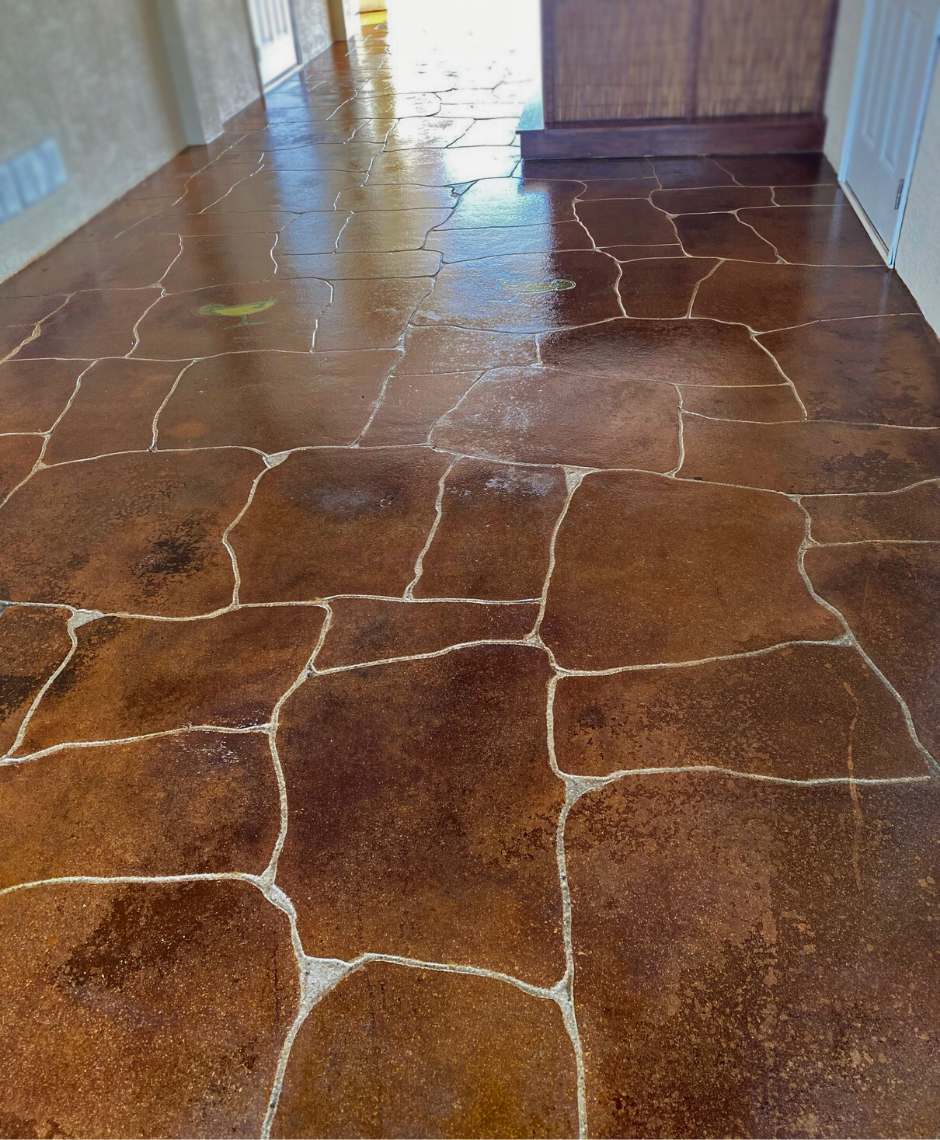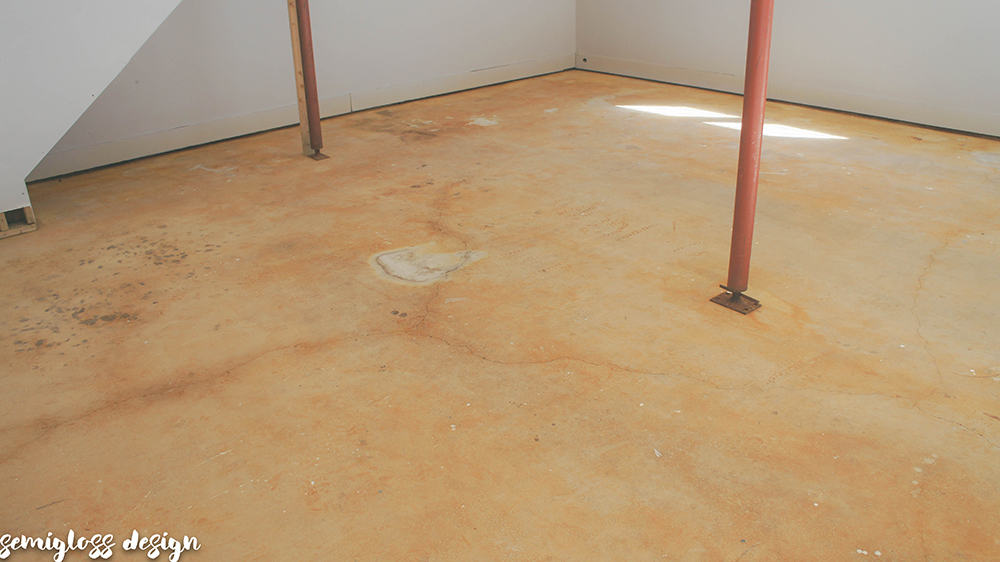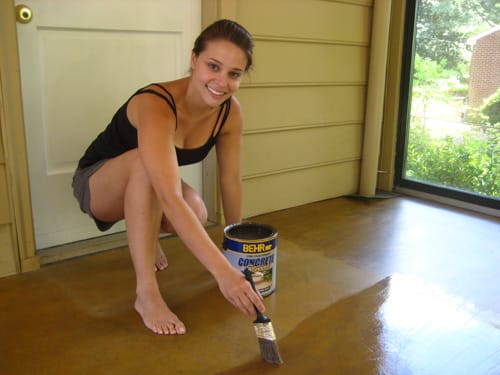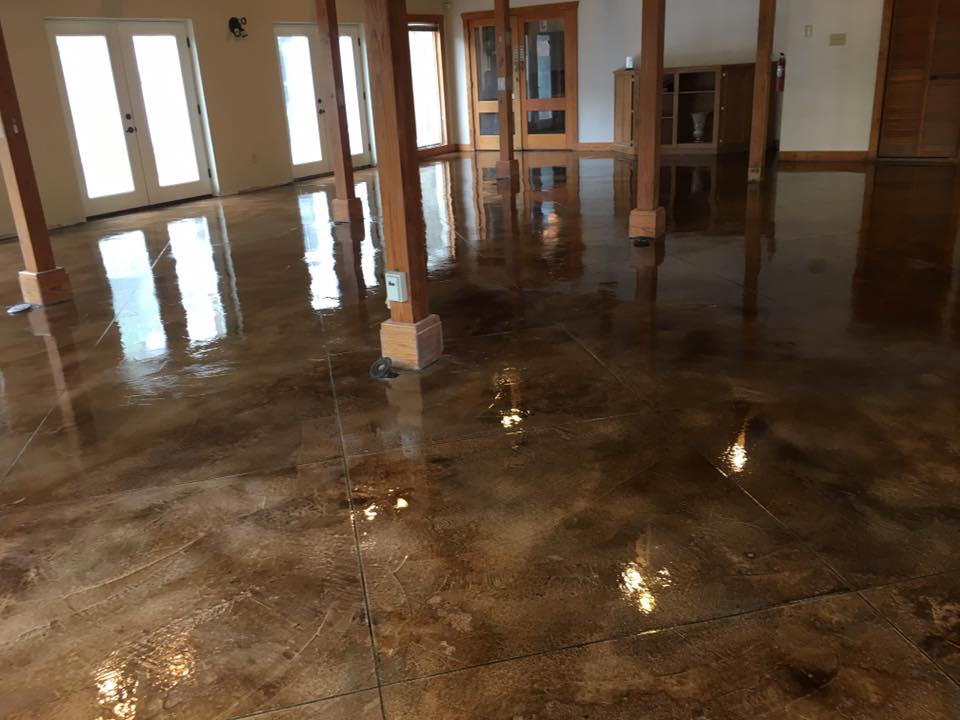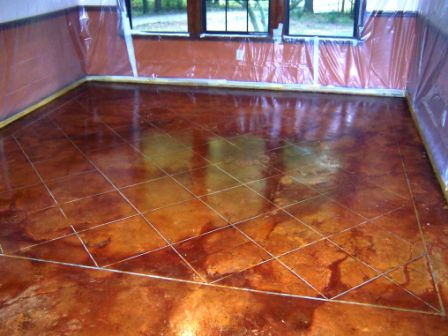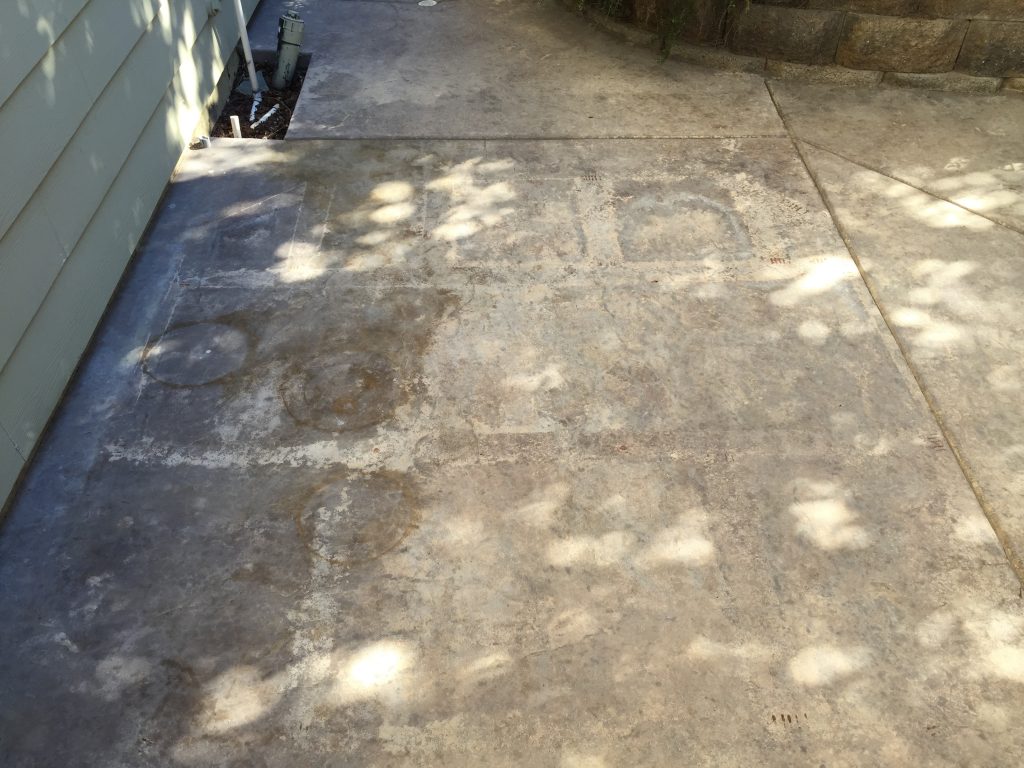Why staining old concrete floors is a great option for renovation
Staining old concrete floors is a great option for renovation as it offers numerous benefits. Whether you have an old industrial space or a residential property with worn-out concrete floors, staining can transform the look and feel of the space. Here are some reasons why staining old concrete floors is a popular choice for renovation projects:
- Enhanced Aesthetics: Staining old concrete floors can instantly enhance the overall aesthetics of the space. With a wide range of color options available, you can choose a stain that complements your existing décor or creates a whole new look. The process of staining adds depth and richness to the concrete, giving it a luxurious and high-end appearance.
- Cost-Effective: Renovating old concrete floors can be an expensive endeavor, particularly if you opt for alternative flooring materials or complete replacement. Staining, on the other hand, is a cost-effective solution that can achieve the desired results at a fraction of the cost. By utilizing the existing concrete as a base, staining eliminates the need for extensive demolition or installation of new flooring.
- Durability and Longevity: Stained concrete floors are known for their durability and longevity. The staining process involves the application of a penetrating sealer that not only enhances the color but also provides protection against stains, spills, and wear and tear. This makes stained concrete floors an ideal choice for high-traffic areas, as they can withstand heavy use without losing their appeal.
- Versatility: Staining old concrete floors offers limitless design possibilities. Whether you prefer a sleek and modern look or a rustic and earthy feel, stains can be customized to match your vision. Stains can be applied in various patterns, such as scoring or etching, to create unique designs and textures. This versatility allows you to achieve the desired aesthetic that aligns with your personal style and the overall theme of the space.
- Easy Maintenance: Another advantage of staining old concrete floors is the ease of maintenance. Unlike other flooring options that require regular polishing or waxing, stained concrete floors only need occasional sweeping and mopping to keep them looking clean and fresh. The protective sealer helps to repel dirt and stains, making it easier to maintain the floor’s appearance over time.
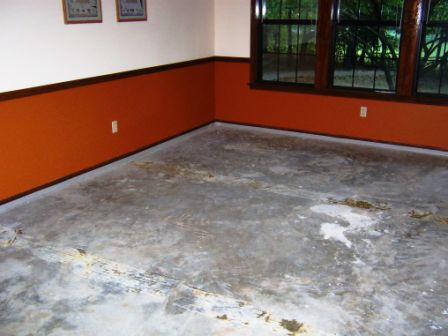
Step-by-step Guide on How to Stain Old Concrete Floors
Preparing the Surface:
1. Clean the floor: Begin by sweeping away any loose dirt, dust, or debris from the concrete surface. Use a broom or vacuum cleaner to ensure a clean starting point.
2. Remove existing stains: If there are any oil spills, paint residues, or stubborn stains on the floor, use a degreaser or concrete cleaner to get rid of them. Scrub the affected areas with a stiff brush and rinse thoroughly.
3. Repair cracks and imperfections: Inspect the concrete for any cracks, holes, or uneven areas. Fill in the gaps with a concrete patching compound and follow the manufacturer’s instructions for drying time.
4. Smooth the surface: Use a grinder or sander to smooth out any rough spots or high points on the concrete floor. This step will ensure a more even application of the stain.
Protecting Surrounding Areas:
5. Cover walls and baseboards: Use plastic sheeting or painter’s tape to cover any nearby walls, baseboards, or furniture that you want to protect from the stain. This will prevent accidental splatters or drips from damaging these surfaces.
6. Tape off edges and joints: Apply painter’s tape along the edges of the floor where it meets walls, doorways, or other surfaces. Additionally, tape off expansion joints or control joints to prevent the stain from seeping into these areas.
Applying the Stain:
7. Choose the right stain: Select a concrete stain that suits your desired color and finish. Consider factors such as the type of stain (acid-based or water-based), the manufacturer’s guidelines, and the desired outcome.
8. Test the stain: Before applying the stain to the entire floor, it is recommended to test it in a small, inconspicuous area. This will allow you to see how the color develops and make any necessary adjustments.
9. Apply the stain: Start by pouring the stain into a pump sprayer or a paint tray. Begin at the farthest corner of the room and work your way toward the exit. Apply an even coat of stain using a sprayer, roller, or brush, following the manufacturer’s instructions.
10. Allow drying time: Once the stain is applied, allow it to dry according to the manufacturer’s instructions. This typically takes several hours, but it may vary depending on the type of stain and environmental conditions.
Choosing the right stain for your old concrete floors
When it comes to rejuvenating old concrete floors, choosing the right stain is crucial. Staining concrete floors not only enhances their appearance but also provides protection against wear and tear. With a wide range of staining options available, it is important to consider certain factors before making a decision.
Firstly, determine the desired look you want to achieve. Stains come in various colors and finishes, including translucent, semi-transparent, and opaque. Translucent stains allow the natural variations in the concrete to show through, creating a unique and organic appearance. On the other hand, opaque stains provide a solid and uniform color. Consider the overall aesthetic of the space and choose a stain that complements the existing decor.
Another important factor to consider is the condition of the concrete. If the concrete is in good condition with minimal imperfections, a translucent stain may be suitable. This type of stain will enhance the natural beauty of the concrete and create a subtle, elegant look. However, if the concrete has significant imperfections or stains, an opaque stain may be a better option. Opaque stains can effectively hide imperfections and provide a fresh, clean look to the floors.
It is also important to consider the level of maintenance you are willing to commit to. Some stains require regular reapplication or additional protective coatings to maintain their appearance and durability. Others may require minimal maintenance and can withstand heavy foot traffic and spills without needing frequent touch-ups. Assess your lifestyle and the level of maintenance you are comfortable with to choose a stain that suits your needs.
Lastly, consult with a professional concrete staining contractor. They have the expertise and experience to guide you in choosing the right stain for your old concrete floors. They can assess the condition of the floors, understand your preferences, and recommend the most suitable stain options. Additionally, they can provide samples and mock-ups to help you visualize the final result before making a decision.
Tips and Tricks for Maintaining and Prolonging the Life of Stained Old Concrete Floors
- Regular Cleaning: One of the most important steps in maintaining stained old concrete floors is regular cleaning. Sweep or vacuum the floor to remove any loose dirt or debris. Use a mild detergent and warm water to mop the floor, making sure to rinse thoroughly to avoid a residue buildup. Avoid using harsh chemicals or abrasive cleaners that can damage the stain.
- Avoid Scratches and Impact: To prolong the life of stained old concrete floors, it is important to prevent scratches and impact damage. Avoid dragging heavy furniture or objects across the floor. Place furniture pads or felt protectors under the legs of chairs, tables, and other furniture to prevent scratches. Use rugs or mats in high-traffic areas to reduce wear and tear.
- Seal the Stain: Applying a sealant to stained old concrete floors can help protect the stain and increase its longevity. Choose a sealant specifically designed for stained concrete floors and follow the manufacturer’s instructions for application. Regularly reapply the sealant as recommended to maintain its effectiveness.
- Avoid Moisture and Water Damage: Moisture can seep into stained old concrete floors and cause damage over time. To prevent moisture-related issues, ensure that the floor is properly sealed and consider using a moisture barrier under the concrete if necessary. Clean up spills immediately and avoid using excessive amounts of water when cleaning the floor.
- Regular Maintenance: Stained old concrete floors require regular maintenance to keep them looking their best. Perform routine inspections to check for any signs of damage or wear. Address any issues promptly to prevent further deterioration. Regularly reapply sealant, touch up any areas of the stain that may have faded or worn, and perform any necessary repairs to maintain the overall appearance and integrity of the floor.
- Avoid Direct Sunlight: Prolonged exposure to direct sunlight can cause the stain on old concrete floors to fade or discolor. Consider using window treatments or UV-blocking films to protect the floor from excessive sunlight. If possible, rearrange furniture or use rugs to minimize direct sunlight exposure in areas with stained concrete floors.
- Professional Maintenance: If your stained old concrete floors require more extensive maintenance or repairs, it is advisable to consult with a professional. They can assess the condition of the floor, provide expert advice, and recommend appropriate solutions. Professional maintenance can help ensure the longevity and durability of your stained concrete floors.
How Do I Stain Old Concrete Floors? : Concrete Floors
Staining A Concrete Floor Is Easy, Just Follow Our Step By Step
How to Carve and Stain Old Concrete : 7 Steps – Instructables
Stained concrete floor-Beaumont, texas
How to Stain Concrete (simple DIY method)
part of 35 yr old concrete floor is not taking stain – what can I
How To Stain Old Concrete The Complete Guide
Concrete Stain and Sealer Patio Makeover Concrete Exchange
Related Posts:
- Concrete Floor Slab Crack Repair
- Polished Concrete Floor Slip Resistance
- How To Install A Polished Concrete Floor
- Concrete Floor Kit
- Industrial Concrete Floor Grinders
- Leveling Concrete Floor For Ceramic Tile
- Polished Concrete Floors Domestic
- Pouring A Concrete Floor Slab
- Self Leveling Concrete Floor Preparation
- Fixing Wood To Concrete Floor
